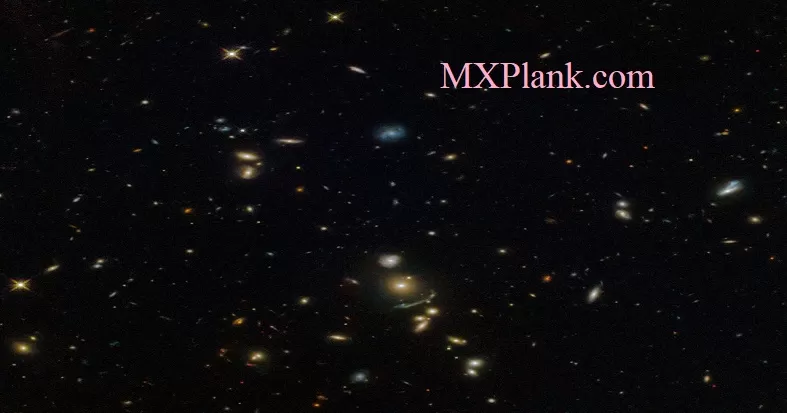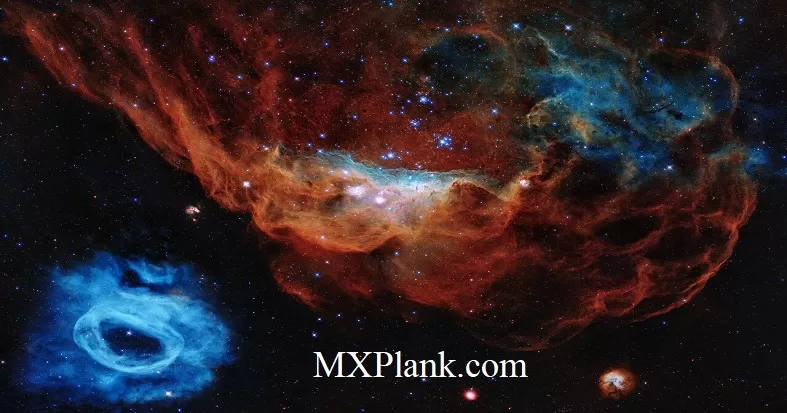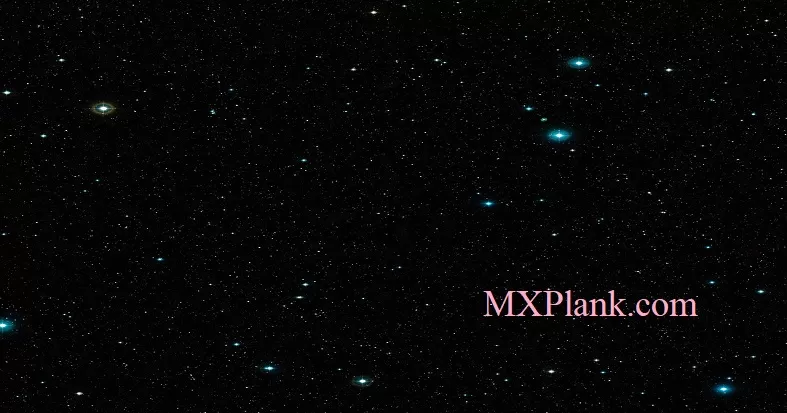MXPlank - AstroPhysics Series : Orion-Nebula
Unspeakable beauty and unimaginable bedlam can be found together in the Orion Nebula Arguably the most famous of all astronomy nebulas, the Great Nebula in Orion is an immense interstellar molecular cloud only 1500 light-years away. In the featured deep image shown in assigned colors, the part of the nebula's center known as M43 is shown as taken by the Hubble Space Telescope. The Great Nebula in Orion can be found with the unaided eye near the easily identifiable belt of three stars in the popular constellation Orion. The entire Orion Nebula, including both M42 and M43 spans about 40 light years and is located in the same spiral arm of our Galaxy as the Sun.
This video is Hubble's sharpest view of the Orion Nebula. It zooms on three ground-based images and gives ua a glimpse of the new Hubble image of the Orion Nebula M42.The gas and dust seen here provides a cradle for hundreds of young stars and is beautifully sculpted and illuminated by radiation from the hotter, more massive stars within the swirling and outlandish cloud.
the camera sweeps past newborn stars, smouldering clouds heated by intense radiation, and tadpole-shaped gaseous envelopes surrounding protoplanetary disks. A glowing gaseous landscape is revealed, that has been illuminated and carved by the high-energy radiation and strong stellar winds from the massive hot stars in the central cluster.
Probing deep within a neighborhood stellar nursery, the NASA/ESA Hubble Space Telescope uncovered a swarm of newborn brown dwarfs. The orbiting observatory's near-infrared camera revealed about 50 of these objects throughout the Orion Nebula's Trapezium cluster about 1,500 light-years from Earth.
The brown dwarfs are too dim to be seen in a visible-light image taken by the Hubble telescope's Wide Field and Planetary Camera 2. This view also doesn't show the assemblage of infant stars seen in the near-infrared image. That's because the young stars are embedded in dense clouds of dust and gas. The Hubble telescope's near-infrared camera, the Near Infrared Camera and Multi-Object Spectrometer, penetrated those clouds to capture a view of those objects.
Packed into the centre of this region are bright lights of the Trapezium stars, the four heftiest stars in the Orion Nebula. Ultraviolet light unleashed by these stars is carving a cavity in the nebula and disrupting the growth of hundreds of smaller stars. The dark speck near the bottom, right of the image is a silhouette of an edge-on disk encircling a young star. Another whitish-looking disk is visible near the bottom, left, just above the two bright stars. This disk is encased in a bubble of gas and dust.
A massive star is illuminating this small region, called M43, and sculpting the landscape of dust and gas. Astronomers call the area a miniature Orion Nebula because of its small size and the single star that is shaping it. The Orion Nebula itself is much larger and has four hefty stars that are carving the dust-and-gas terrain.
The above video contains 3D animation of the Orion Nebula.
This video is Hubble's sharpest view of the Orion Nebula. It zooms on three ground-based images and gives ua a glimpse of the new Hubble image of the Orion Nebula M42.The gas and dust seen here provides a cradle for hundreds of young stars and is beautifully sculpted and illuminated by radiation from the hotter, more massive stars within the swirling and outlandish cloud.
the camera sweeps past newborn stars, smouldering clouds heated by intense radiation, and tadpole-shaped gaseous envelopes surrounding protoplanetary disks. A glowing gaseous landscape is revealed, that has been illuminated and carved by the high-energy radiation and strong stellar winds from the massive hot stars in the central cluster.
Probing deep within a neighborhood stellar nursery, the NASA/ESA Hubble Space Telescope uncovered a swarm of newborn brown dwarfs. The orbiting observatory's near-infrared camera revealed about 50 of these objects throughout the Orion Nebula's Trapezium cluster about 1,500 light-years from Earth.
The brown dwarfs are too dim to be seen in a visible-light image taken by the Hubble telescope's Wide Field and Planetary Camera 2. This view also doesn't show the assemblage of infant stars seen in the near-infrared image. That's because the young stars are embedded in dense clouds of dust and gas. The Hubble telescope's near-infrared camera, the Near Infrared Camera and Multi-Object Spectrometer, penetrated those clouds to capture a view of those objects.
Packed into the centre of this region are bright lights of the Trapezium stars, the four heftiest stars in the Orion Nebula. Ultraviolet light unleashed by these stars is carving a cavity in the nebula and disrupting the growth of hundreds of smaller stars. The dark speck near the bottom, right of the image is a silhouette of an edge-on disk encircling a young star. Another whitish-looking disk is visible near the bottom, left, just above the two bright stars. This disk is encased in a bubble of gas and dust.
A massive star is illuminating this small region, called M43, and sculpting the landscape of dust and gas. Astronomers call the area a miniature Orion Nebula because of its small size and the single star that is shaping it. The Orion Nebula itself is much larger and has four hefty stars that are carving the dust-and-gas terrain.
The above video contains 3D animation of the Orion Nebula.
Credit:
NASA & ESO






